Recent Posts
3 Tips for Water Damage Claims
11/27/2024 (Permalink)
 Most homeowners policies cover sudden or accidental water damage, but not all repairs associated with it are necessarily covered.
Most homeowners policies cover sudden or accidental water damage, but not all repairs associated with it are necessarily covered.
3 Water Damage Claims Tips
Bursting pipes are not the only issue that could prompt the need for water remediation services in your home. So many different factors can play into filing your insurance claim that you may not know where to begin or how to decide if the damage to your home in Bronxville, NY, is covered. Here are three ways to improve your confidence that your claim will be accepted.
1. Review Your Policy
Most homeowners' policies cover sudden or accidental water damage, but not every repair associated with it is necessarily covered. For example, your insurance will likely pay for the damage caused by a busted pipe but not to fix the broken pipe itself. Depending on the exemptions in your coverage, you may be able to pay for the remediation of any secondary damage that happens as a result of the original issue if it was covered by your policy. Your insurance agent can help you understand exactly what your policy covers.
2. Perform Regular Maintenance
The key to an accepted claim is often your own vigilance. Have bursting pipes repaired as soon as you notice the problem. Perform regular inspections and maintenance on all your plumbing. Make sure that your roof is intact, and have any weak points fixed immediately. If damage happens because you neglected to take care of your home, your claim may be denied.
3. Keep Accurate Records
Keeping a file with records of the repairs that plumbers and other maintenance professionals have done can help you back up your insurance claim. If your action on an issue is called into question, you have proof that you stayed on top of the problem. Accurate records also help keep you on track so that you remember when your last inspection or update was performed.
Whether water damage was caused by bursting pipes or some other type of leak, responding quickly and keeping an account of how you responded is important. Your fast action and knowledge of your policy can help you file a successful claim.
What Can a Flood Cut Reveal?
11/27/2024 (Permalink)
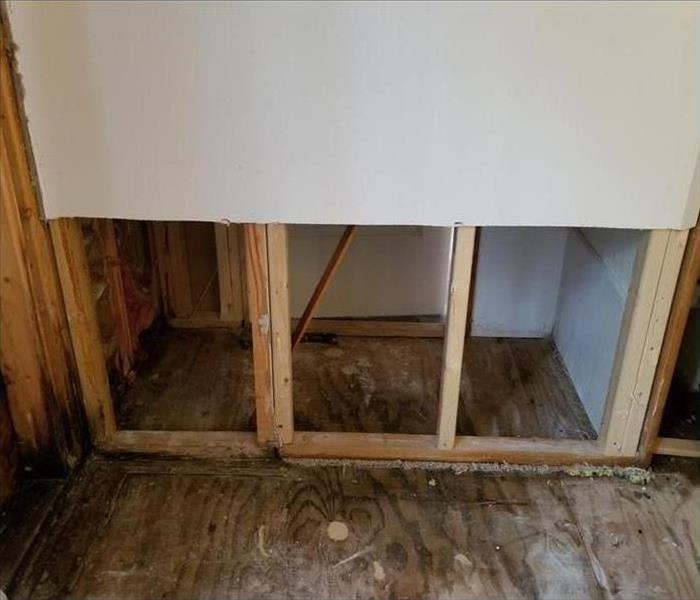 You can trust our trained team to restore your business or home after a storm, to make it "Like it never happened."
You can trust our trained team to restore your business or home after a storm, to make it "Like it never happened."
What Information Can A Flood Cut Provide?
Commercial property owners in locations prone to flooding may have heard of a flood cut. This procedure involves cutting out drywall one foot above the highest point of flood damage. Flood cuts enable damage mitigation experts to determine the extent of moisture present behind a wall. Here are several things this type of cut may reveal.
The Extent of Damage
A flood cut can help experts determine how much water is present in wall cavities. Standing water or residual moisture can heighten the risk of mold growth in a structure. A flood cut can also indicate other types of damage:
- Saturated drywall
- Ruined insulation
- Hidden moisture
Depending on the degree of damage, restoration experts may recommend that owners have restoration professionals tear out and replace drywall and insulation. If damage is less severe, increased ventilation and a dehumidifier can promote drying.
Whether Tearing Out Is Necessary
Porous materials such as drywall and insulation can be ruined by saturation with water and will pose a heightened mold risk. The category of water damage is an important consideration. If water damage resulting from a broken pipe is addressed quickly, drying may be all that is necessary. Contamination is probably a factor for damage caused by a sewer backup or flooding, and more extensive cleanup and restoration may be necessary.
Whether Mold Is Present
If water damage occurred more than 48 hours earlier, a flood cut can help experts determine whether mold is growing. This procedure may expose an amateur to mold spores. For this reason, business owners should not attempt to make a flood cut, particularly if a musty odor or other indications of fungal growth are present.
Only a mitigation expert should make a flood cut at a building in Tuckahoe, NY . To determine whether this procedure is necessary after flooding, contact a service that specializes in storm and water damage.
3 Topics To Review With Kids Before a Fire
11/27/2024 (Permalink)
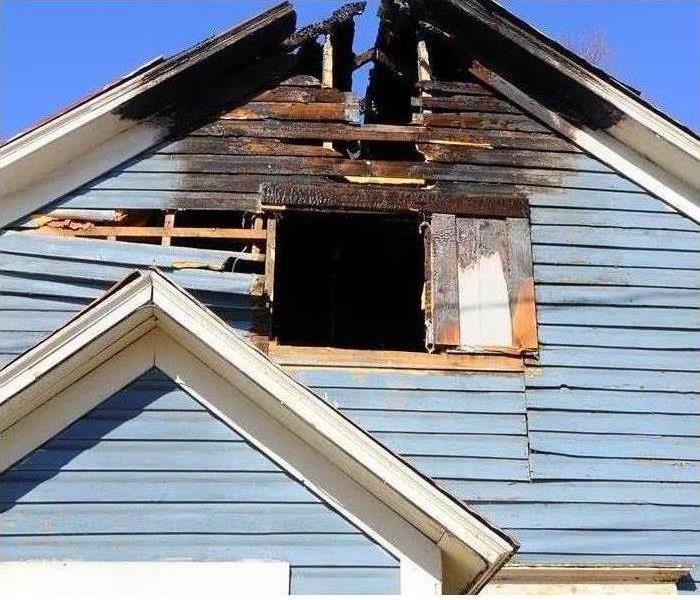 Plan for your family on what to do in case of a fire in your home breaks out
Plan for your family on what to do in case of a fire in your home breaks out
Kids Safety Tips
A top priority for parents in Scarsdale, NY is kids' safety. When developing emergency drills and plans, parents should remember these three often-overlooked concepts. They will especially help children be mentally and physically prepared for an emergency.
1. Visit a Firefighter in Full Gear
First, it is a terrific idea for children to visit a fire station in Scarsdale, NY, to see a firefighter in full gear before any emergency, especially a home fire. The basic uniform includes a coat, boots, pants, gloves, and a helmet. People may forget that a mask covers the firefighter’s face and his or her breathing device can sound more like Darth Vader. Children hopefully will feel less anxious if they’ve seen a firefighter’s apparatus before a true emergency.
2. Discuss Usage of the Fire Escape
The second item to discuss regarding kids' safety is how children actually use a fire escape if they are above the first level of a home or apartment. Children should practice unlatching and opening windows or doors nearby. They need to understand how to physically climb down the house or building. Every bedroom higher than the primary level should have a fire ladder. All family members should know where to find the ladders, how to set them up, and how to use them. This process can include pushing or kicking a screen to remove it.
3. Explain the Need To Attract Attention
In a truly desperate situation, family members should all understand it’s okay to break a window to get attention from firefighters below. If children have trouble opening a window, teach them how to break the glass in an emergency.
When it comes to fires and kids' safety, drills and discussions are crucial. As children grow and mature, their understanding will expand and actions and responses will vary in any emergency situation. Hence, it’s also important to regularly review and revise your plans for what to do in case of a fire and the necessary work afterward.
Building Resilience: Community Resources and Support After Water-Related Disasters
1/9/2024 (Permalink)
As winter's icy grasp tightens, it's time to ready your home for the challenges posed by winter storms. From freezing temperatures to heavy snowfall, proper preparation ensures the safety and warmth of your household during the coldest months. In this blog, we'll guide you through essential steps to fortify your home against winter storms, creating a haven of warmth and resilience.
Insulate Windows and Doors
Start by checking for drafts around windows and doors. Seal any gaps with weatherstripping or caulking to prevent heat loss. Consider using thermal curtains to add an extra layer of insulation.
Ensure your heating system is in peak condition by scheduling a professional inspection. Clean or replace filters, bleed radiators if necessary, and consider investing in a smart thermostat for efficient temperature control.
Protect Pipes from Freezing
Frozen pipes can lead to costly damage. Insulate exposed pipes with pipe sleeves or wrapping to prevent freezing. During extremely cold nights, leave faucets dripping to maintain water flow.
Create a winter storm emergency kit that includes essentials like blankets, warm clothing, non-perishable food items, bottled water, flashlights, batteries, and a first aid kit. Keep this kit easily accessible in case of power outages.
Backup Electricity
If you have a generator, schedule a maintenance check to ensure it's in working order. Test it periodically to guarantee a seamless transition in case of a power outage. Stock up on fuel and follow safety guidelines for generator use.
Trim Tree Branches
Ice and heavy snow can weigh down branches, leading to breakage. Trim back overhanging branches to prevent them from falling onto your home during a winter storm. This also reduces the risk of power lines being damaged.
Keep gutters and downspouts clear of debris to prevent ice dams and ensure proper drainage. Ice dams can lead to roof leaks, so proactive maintenance is key to winter storm preparedness.
Prepare for Power Outages
Charge electronic devices, such as phones and laptops, in advance. Consider investing in a portable power bank for backup. Keep a supply of candles and matches in a safe location for alternative lighting. Know the location of local emergency shelters and resources. Familiarize yourself with community emergency plans and stay informed about weather updates from reliable sources.
Check Carbon Monoxide and Smoke Detectors
Winter storm preparations should include checking your carbon monoxide and smoke detectors. Replace batteries and test each unit to guarantee they are in proper working order.
Establish a communication plan with family members or neighbors in case of an emergency. Share contact information, establish meeting points, and ensure everyone is aware of the plan.
Stay updated on weather forecasts and advisories. Having real-time information allows you to make informed decisions about when to take preventive measures or when to stay indoors during severe winter weather.
A well-prepared home is a resilient fortress against winter storms. By taking these proactive steps, you ensure the safety, warmth, and comfort of your household during the coldest months. Winter storm survival begins with preparation, and with these guidelines, you can face the frosty challenge with confidence and readiness.
Building a Fire-Resistant Home: Types of Construction You Need to Know
11/21/2023 (Permalink)
When it comes to creating a safe and secure home environment, fire-resistant construction should be a top priority. Homes built with fire-resistant materials and designs can withstand wildfires and prevent rapid spread of fire within the property. In this blog, we will discuss the different types of fire-resistant home construction and their benefits to help you make an informed choice for your home.
Masonry Construction
Masonry construction involves using materials such as brick, concrete, or stone for the walls, floors, and roof of a home. These materials have excellent fire resistance due to their non-combustible nature, which can significantly decrease the spread of fire within a structure. They are also highly durable, providing a long-lasting and low-maintenance option for homeowners.
Steel Framing
Using steel framing for home construction offers excellent fire resistance and durability. Steel is non-combustible, making it an ideal material for reducing the spread of fire and increasing structural safety. It is also resistant to pests, mold, and moisture, reducing the risk of long-term damage to the home. In addition, steel framing is an eco-friendly option as it is 100% recyclable.
Exterior Fire-Resistant Treatments
Another option for making homes fire-resistant is by using exterior fire-resistant treatments such as coatings, paints, and sprays. These treatments contain chemical additives that can delay or prevent the spread of flames, providing additional protection to the structure. While these treatments can be applied to traditional materials such as wood or stucco, they are most effective when used in combination with other fire-resistant construction materials.
Insulated Concrete Forms (ICFs)
ICFs are blocks of expanded polystyrene foam reinforced with steel that are stacked and filled with concrete to form walls. This construction method offers excellent fire resistance as the concrete acts as a thermal insulator, reducing the spread of heat and flames. ICFs also provide superior insulation, energy efficiency, and noise reduction, making them a popular choice for homeowners.
Fire-Resistant Roofing
The roof is one of the most vulnerable parts of a home during a wildfire as it can easily catch and spread fire to the rest of the structure. Building a fire-resistant roof using materials such as metal, tile, or asphalt can significantly increase the home's fire safety. These materials are non-flammable, heat-resistant, and can withstand high winds, making them a reliable option for homeowners in high-risk areas.
In conclusion, choosing the right type of fire-resistant construction for your home is crucial to ensure maximum safety from devastating wildfires. Incorporating materials such as masonry, steel, ICFs, and fire-resistant treatments, along with fire-resistant roofing, can significantly decrease the spread of fire and provide a safer living environment. It's important to consult with a professional contractor or fire department to determine the best fire-resistant construction options for your area's climate and wildfire risks. Building a fire-resistant home is an investment in your safety and peace of mind, and it may provide financial benefits through lower insurance premiums and increased property value.
Mold and Home Energy Efficiency: Finding the Balance
10/29/2023 (Permalink)
 Understanding the connection between energy efficiency and moisture control is essential being a home or business owner.
Understanding the connection between energy efficiency and moisture control is essential being a home or business owner.
Achieving energy efficiency in our homes is a priority for many homeowners, but it's crucial to strike a balance between energy-saving measures and preventing mold growth. Mold can thrive in environments with excessive moisture and poor ventilation, which may occur when we seal our homes tightly. In this blog, we will explore how to maintain a balance between energy efficiency and mold prevention for a healthy and comfortable living environment.
Understanding the Connection
To find the balance between energy efficiency and mold prevention, it's important to understand their connection. Energy-efficient homes with proper insulation and tightly sealed windows and doors can reduce heat loss and lower energy consumption. However, these measures can also trap moisture indoors, leading to mold growth. Proper ventilation is critical to prevent excessive moisture buildup, as it helps remove humidity and allows fresh air to circulate. Awareness of this connection enables homeowners to implement strategies that promote energy efficiency while avoiding the conditions that favor mold growth.
Moisture Control Strategies
Implementing effective moisture control strategies is vital for balancing energy efficiency and mold prevention. Regularly inspecting and fixing any sources of water leaks, such as plumbing fixtures or roofs, can reduce moisture intrusion. Installing and maintaining proper drainage systems and guttering can also prevent water from accumulating near the foundation of the house. Additionally, using a dehumidifier in areas prone to high humidity, like basements or bathrooms, can help control moisture levels. By actively managing moisture, homeowners can minimize the risk of mold growth without compromising energy efficiency.
Ventilation Solutions
Proper ventilation is key to maintaining a balance between energy efficiency and mold prevention. While tightly sealed homes can be energy-efficient, they require mechanical ventilation systems to ensure air circulation. Installing exhaust fans in kitchens and bathrooms helps remove moisture-laden air from these areas. Consider utilizing energy recovery ventilators (ERVs) or heat recovery ventilators (HRVs) to bring in fresh, filtered air while expelling stale air. Regularly maintaining these ventilation systems, including cleaning or replacing filters, ensures their optimal performance and helps prevent mold growth.
Insulation Options
While insulation is essential for energy efficiency, certain types of insulation may also trap moisture and promote mold growth. Fiberglass insulation is a popular choice, but it can absorb moisture and subsequently promote mold growth. Alternative insulation options like spray foam or cellulose insulation can provide comparable energy savings with less risk of mold growth. Proper installation of insulation is also vital for maintaining a balance between energy efficiency and mold prevention. Proactively managing moisture and ensuring proper ventilation while using insulation helps homeowners avoid mold infestations and maintain optimal energy efficiency levels. It's important to choose the right insulation option for your home and maintain it regularly.
Striking the balance between energy efficiency and mold prevention is essential for homeowners looking to make their homes comfortable, efficient, and mold-free.
By understanding the connection between energy efficiency and moisture control, implementing proper moisture control strategies, and investing in effective ventilation solutions, homeowners can enjoy a home that is both energy-efficient and resilient against mold growth.
Financial Preparedness for Water Damage Emergencies
10/21/2023 (Permalink)
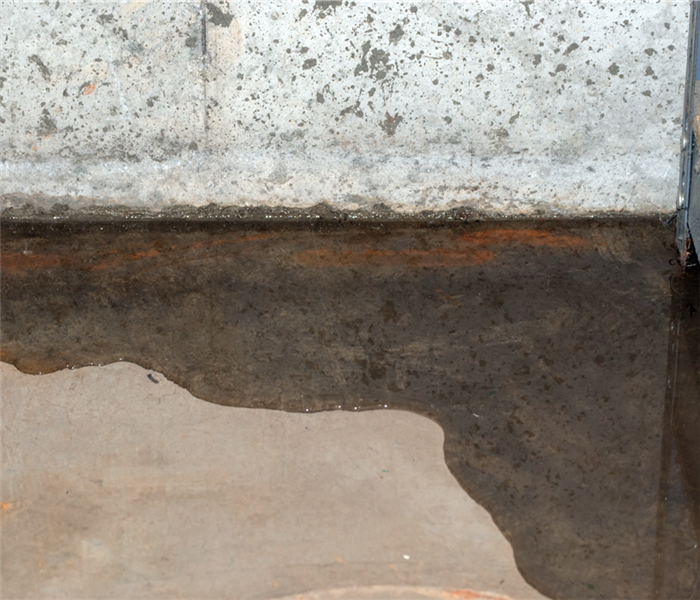 Establishing an emergency fund specifically designated for unforeseen expenses is crucial.
Establishing an emergency fund specifically designated for unforeseen expenses is crucial.
Water damage emergencies can wreak havoc on your home and your finances. From burst pipes to severe storms, unforeseen events can result in significant expenses for repairs and restoration. Being financially prepared for water damage emergencies can help alleviate the stress and ensure a smoother recovery process. In this blog post, we will explore essential steps to take in order to protect your finances and prevent unexpected financial burdens when faced with water damage emergencies.
Build an Emergency Fund
Establishing an emergency fund specifically designated for unforeseen expenses, such as water damage emergencies, is crucial. Aim to save three to six months' worth of living expenses to provide a safety net during challenging times.
Review and Understand Insurance Coverage
Review your homeowner's or renter's insurance policy to understand the extent of coverage for water damage. Ensure you have adequate coverage for various causes of water damage, including burst pipes, leaks, and natural disasters. If necessary, consider adding extra coverage, such as flood insurance or sewer backup coverage, to protect yourself from potential gaps in your existing policy. These additions can safeguard your finances in case of specific water damage scenarios.
Maintain Regular Property Inspections and Maintenance
Regularly inspect and maintain your property to prevent water damage before it occurs. Look for signs of leaks, deterioration, or damage to plumbing, roofing, and appliances. Timely repairs and maintenance can help avoid costly water damage incidents.
Consider installing water detection devices in vulnerable areas, such as basements, near appliances, or under sinks. These devices can detect leaks and water accumulation, allowing you to address issues before extensive damage occurs. Insulate exposed pipes to protect them from freezing during colder months, as burst pipes can cause significant water damage. Prevention is key in avoiding costly repairs.
Research and Establish Relationships with Restoration Professionals
Find trusted restoration professionals: Research and identify reputable restoration professionals who specialize in water damage emergencies. Establishing these connections beforehand can save time and reduce stress during an emergency.
Consult with restoration professionals to obtain cost estimates for various water damage scenarios. Having a general idea of potential costs can help you financially prepare for unforeseen emergencies.
Create a Detailed Inventory of Belongings
Create a detailed inventory of your belongings, including photographs, receipts, and serial numbers whenever possible. This documentation helps facilitate the claims process with your insurance company and ensures proper compensation for damaged items.
By implementing these financial preparedness strategies, you can protect your finances from the unexpected costs of water damage emergencies. Being proactive, understanding your insurance coverage, and preparing for potential scenarios give you peace of mind and financial stability during challenging times. Remember, it is essential to build an emergency fund, maintain your property, and establish relationships with trusted restoration professionals to ensure a more manageable recovery process.
Surviving Winter Storms: Essential Home Preparation Guide for the Northeast
9/11/2023 (Permalink)
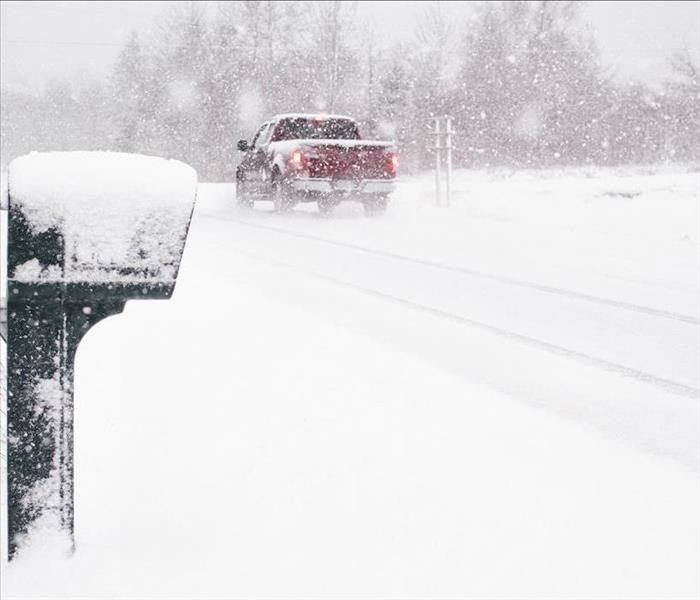 Preparing your home for winter storms in the Northeast is essential to ensure safety, comfort, and peace of mind throughout the cold season.
Preparing your home for winter storms in the Northeast is essential to ensure safety, comfort, and peace of mind throughout the cold season.
The winter season in the Northeast can be unforgiving, with freezing temperatures, heavy snowfall, and strong winds. As a homeowner or property owner in this region, it's essential to take proactive steps to prepare your home for the challenges that winter storms can bring. In this blog, we'll provide a comprehensive winter storm survival guide to help you safeguard your property, ensure the safety of your loved ones, and maintain a comfortable living environment throughout the cold season.
Weatherproofing Your Home
When it comes to weatherproofing your home, focus on creating a warm and energy-efficient environment. Inspect the insulation in your walls, attic, and crawl spaces to prevent heat loss. If needed, consider adding extra insulation to improve your home's energy efficiency. Additionally, seal any gaps or cracks around doors and windows using weatherstripping or caulking to keep cold air out and warm air in. Installing thermal curtains or window film can further enhance your home's insulation and help reduce heat loss through windows.
Maintaining the Heating System
Your heating system is crucial during the winter months, so ensure it's in good working condition. Schedule a professional inspection of your furnace or heating system to identify and address any potential issues. Regularly replace or clean air filters to maintain proper airflow and energy efficiency. Consider investing in a programmable thermostat to regulate indoor temperatures effectively and save on heating costs.
Chimney and Fireplace Safety
If you have a chimney or fireplace, prioritize safety during the winter season. Have your chimney professionally inspected and cleaned before winter to prevent potential fire hazards. Ensure the damper is functioning correctly to prevent drafts when the fireplace is not in use. Always clean out any ash and debris from the fireplace to maintain a safe and efficient heating source.
Winterizing Outdoor Spaces
Protecting your outdoor spaces and equipment from winter damage is equally important. As temperatures drop, turn off outdoor faucets and drain the water to prevent freezing and bursting pipes. Store garden hoses indoors to prevent them from freezing and becoming brittle. Clearing leaves and debris from gutters is essential to prevent ice dams and water damage to your property.
Emergency Preparedness
Winter storms can sometimes lead to power outages and emergencies, so it's vital to be prepared. Assemble an emergency kit with essentials like flashlights, batteries, non-perishable food, bottled water, blankets, and a first-aid kit. Consider investing in a portable generator to provide electricity during power outages. Establish a communication plan with family members or neighbors to stay connected and informed during emergencies.
Snow Removal and Deicing
During and after snowfall, keeping pathways safe and accessible is crucial. Keep snow shovels, ice melt, and rock salt readily available for snow removal and deicing. If you have a large property or anticipate heavy snowfall, consider hiring a snow removal service to efficiently clear pathways and driveways.
Preparing your home for winter storms in the Northeast is essential to ensure safety, comfort, and peace of mind throughout the cold season. Weatherproof your home, maintain your heating system, and prioritize chimney and fireplace safety. Winterize outdoor spaces, create an emergency preparedness plan, and equip yourself with the necessary tools for snow removal and deicing. By following this comprehensive winter storm survival guide, you'll be well-prepared to face the challenges of winter and keep your home and loved ones safe and secure.
Identifying Fire Risk Factors for Businesses to Prevent Revenue Loss
8/14/2023 (Permalink)
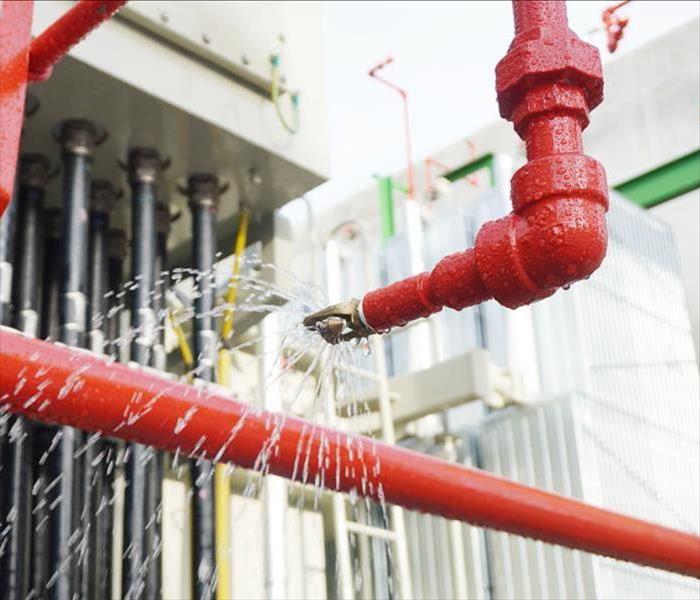 Investing in high-quality fire safety equipment is a proactive measure that can save businesses from significant losses.
Investing in high-quality fire safety equipment is a proactive measure that can save businesses from significant losses.
As a home or property owner, protecting your investment is paramount. However, for businesses, the stakes are even higher. A fire incident can have devastating consequences, leading to significant revenue loss, property damage, and potential disruption of operations. In this blog, we will explore essential fire risk factors that businesses should be aware of to prevent revenue loss and secure their future.
1. Electrical Hazards
One of the leading causes of commercial fires is electrical hazards. Overloaded circuits, faulty wiring, and electrical equipment malfunctions can spark fires without warning. Business owners should ensure that their electrical systems are up-to-date and compliant with safety regulations. Regular inspections by certified electricians can help identify potential hazards and prevent revenue loss due to electrical fires.
2. Fire Safety Equipment
Investing in high-quality fire safety equipment is a proactive measure that can save businesses from significant losses. Fire extinguishers, smoke detectors, sprinkler systems, and fire alarms are indispensable tools in mitigating fire damage. Regular maintenance and testing of these systems are crucial to ensure their effectiveness during emergencies.
3. Human Error
Human error is an unfortunate but common factor contributing to commercial fires. Employees' awareness of fire safety protocols is vital for preventing accidents. Conducting regular fire safety training, evacuation drills, and providing clear instructions on how to handle potential fire hazards can significantly reduce the risk of fire incidents.
4. Flammable Materials and Chemicals
Many businesses deal with flammable materials and chemicals, which can pose a serious fire risk if mishandled or stored improperly. It's essential for business owners to establish strict protocols for the storage and handling of such materials. Ensuring proper ventilation, fire-resistant storage containers, and staff training in handling hazardous substances are crucial steps to avoid revenue loss from fire damage.
5. HVAC Systems
HVAC systems, if not properly maintained, can become fire hazards. Dust accumulation, electrical malfunctions, and overheating components can lead to fire outbreaks. Regular inspections and maintenance of HVAC systems can prevent fire incidents and protect businesses from revenue loss.
6. Arson and Vandalism
Unfortunately, businesses are not immune to intentional acts of arson and vandalism. Adequate security measures, such as surveillance cameras, security patrols, and well-lit premises, can deter potential arsonists and vandals, safeguarding the business from intentional fire damage.
7. Smoking Policies
If your business allows smoking on the premises, enforcing strict smoking policies is crucial. Carelessly discarded cigarette butts can easily ignite fires, leading to devastating consequences. Designated smoking areas with fire-resistant receptacles should be established to reduce the risk of fire incidents.
Preventing revenue loss due to fire damage requires vigilance, proactive measures, and a commitment to fire safety. By identifying and addressing the fire risk factors mentioned in this article, businesses can significantly reduce the likelihood of fire incidents. Implementing a comprehensive fire safety plan, investing in quality fire safety equipment, and providing staff training can go a long way in protecting your business and securing its future. Remember, preparedness is key to minimizing potential losses and ensuring the safety of your business and all its stakeholders.
How to Save Water-Damaged Papers and Photos: Essential Tips for Document Restoration
7/18/2023 (Permalink)
Water damage can wreak havoc on our cherished possessions, especially important documents, photographs, and other paper-based items. Whether it's a result of a flood, a leak, or an accidental spill, knowing how to salvage water-damaged papers and photos is crucial to preserving precious memories and valuable records. In this blog, we will provide you with essential tips and techniques for restoring water-damaged papers and photos effectively.
Act Quickly
Time is of the essence when dealing with water-damaged papers and photos. The longer they remain submerged or exposed to moisture, the more difficult the restoration process becomes. Act promptly to minimize the potential damage.
Handle with Care
When retrieving water-damaged papers and photos, handle them with extreme care to avoid further deterioration. Use gloves to protect the items from oils and contaminants on your hands. Avoid touching the surfaces as much as possible.
Separate and Sort
Gently separate the wet papers and photos, and sort them into categories based on their condition and level of damage. Group similar items together for easier organization and restoration.
Dry Flat
Place the wet papers and photos on a clean, flat surface to dry. Avoid stacking them or using high heat sources like hairdryers or heaters, as these can cause further damage. Instead, opt for natural air drying in a well-ventilated area.
Use Blotting and Absorbent Materials
To remove excess moisture from papers and photos, lightly blot them with absorbent materials like clean, white towels or unprinted newsprint. Press gently to draw out the water without applying too much pressure.
Freeze Time-Sensitive Materials
If you have valuable or time-sensitive items like books or delicate photographs, consider freezing them to halt further deterioration. Freezing can buy you some time until you can seek professional assistance for proper restoration.
Rinse Off Contaminants
If your papers or photos are contaminated with dirty or muddy water, gently rinse them with clean, cold water. Use a soft spray or submerge them briefly to remove the contaminants. Avoid rubbing or scrubbing, as it can cause additional damage.
Seek Professional Assistance
For valuable or irreplaceable documents and photos, it's advisable to seek professional help from disaster restoration experts specializing in document restoration. They have the expertise, equipment, and techniques to handle delicate items and ensure the best possible restoration outcome.
Digitize for Future Preservation
Consider digitizing your important papers and photos as a preventive measure against future water damage. Create digital copies or scan your documents and store them securely in multiple locations, such as cloud storage or external hard drives.
Consult Your Insurance Provider
If the water damage is significant or covered by your insurance policy, contact your insurance provider to initiate a claim. They can guide you through the necessary documentation and provide assistance for restoration services if required.
Water-damaged papers and photos hold sentimental and sometimes historical value. By acting quickly, handling them with care, and following the proper restoration techniques mentioned above, you can increase the chances of salvaging these important items. However, it's important to understand the limitations of DIY restoration and to seek professional assistance when dealing with valuable or irreplaceable documents and photographs. Remember, the key is to act swiftly and prioritize the preservation of your cherished memories and vital records.
 Most homeowners policies cover sudden or accidental water damage, but not all repairs associated with it are necessarily covered.
Most homeowners policies cover sudden or accidental water damage, but not all repairs associated with it are necessarily covered.

 24/7 Emergency Service
24/7 Emergency Service





